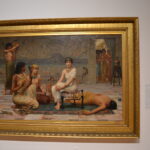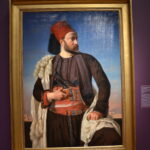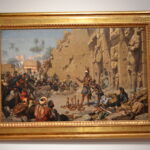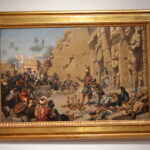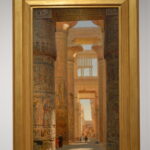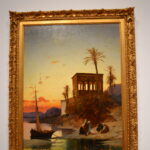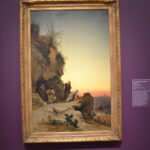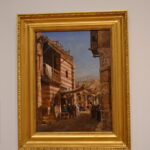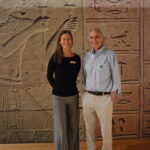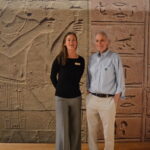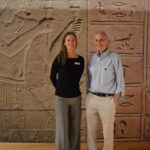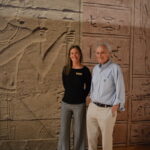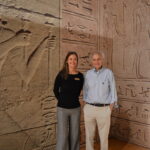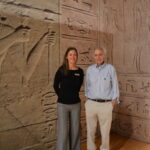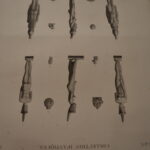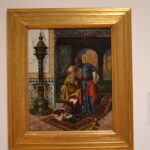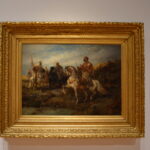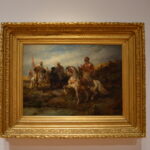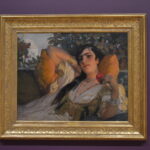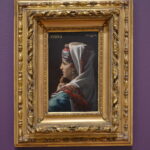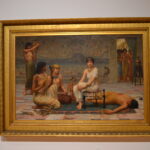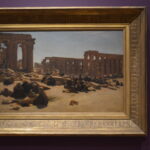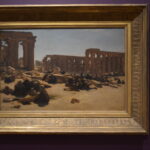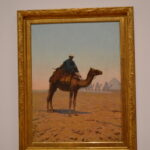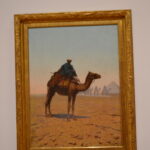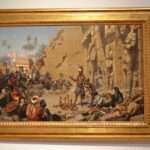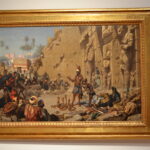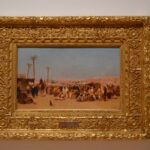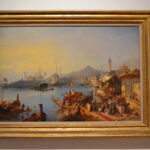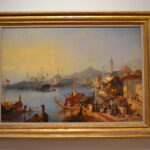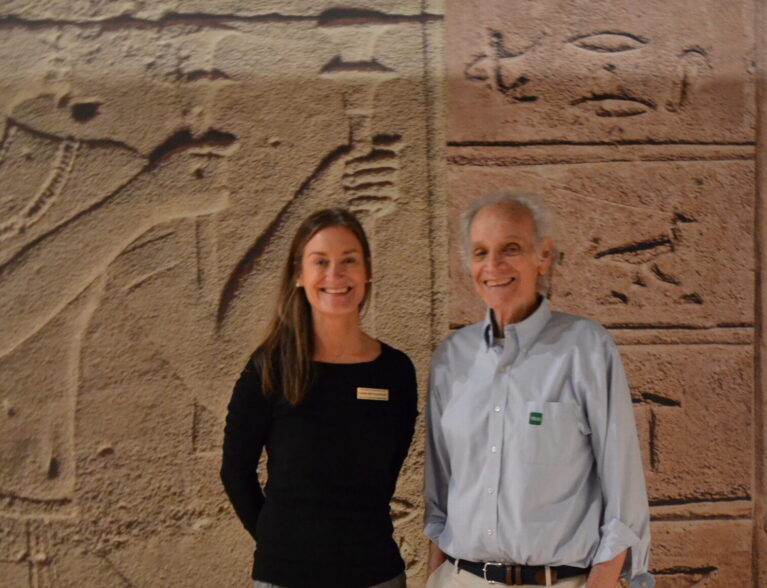
The Vero Beach Museum of Art offers a fascinating look at history with Ancient Egypt & the Napoleonic Era: Masterworks from the Dahesh Museum, on display through April 28. The exhibition features 60 works of primarily 19th century “Orientalist” artworks, including paintings, sculptures, etchings and illustrated books, on loan from the Dahesh Museum in New York.
“The connection with Napoleon is that Napoleon invaded Egypt in 1798. He takes with him 55,000 soldiers. He’s going to invade Egypt, control the Middle East,” explains Bob Brier, Ph.D., renowned Egyptologist, educator and author, noting that one objective was to damage England’s trade route to India.
“Bonaparte knew he was great, and he even said, ‘All great men’s careers begin in the Orient,’ and he’s following in the footsteps of his hero Alexander the Great, who conquered Egypt 2,000 years before him. Remember, when he’s there, this is Bonaparte, age 29. He’s not the emperor. He’s a general and undefeated; he’s a hero.”
As Napoleon was also a “culture vulture,” Brier says he brought along some 150 savants (scholars) – scientists, artists, engineers, architects, engineers and zoologists – many of them young, to record whatever they saw.
Militarily, the trip was a disaster. Despite a couple of victories, British Adm. Nelson defeated the French navy and in 1799 Bonaparte secretly deserted his land-locked army, which remained until 1801.
The scholars also soldiered on, risking their lives over the next two years to draw and describe everything from animals and mummies to tombs, hieroglyphs and everyday life, before returning to France and turning their discoveries into engravings for publication.
“And the publication is the largest publication in the history of the world. Nothing like it had ever been published. It took them 20 years to publish,” says Brier.
“Description De L’Égypte” was comprised of 10 volumes of text, and 13 volumes of engraved plates with some 3,000 illustrations.
Napoleon’s triumph there, too, was short-lived. His name appears on just the first volume’s title page; having been exiled or died when the others were published. The scholars, though, had been chosen well. Their accurate drawings were precise depictions that captured all aspects of Egypt.
“Not just the monuments, but what modern Egypt looked like, so they recorded the people, the mosques, the marketplaces, all of that. And these guys are measuring everything wherever they go. These are the first accurate depictions of the pyramids of Giza, and for the first time, you get a real idea of what the Sphinx looked like,” he says.
It was also that time that the Rosetta Stone was discovered, says Brier, pointing to the exhibit’s engraving of its bottom section.
“This may be the greatest thing that Bonaparte does for the world, in a way. It’s the key to the decipherment of hieroglyphs,” says Brier. “It’s called the Rosetta Stone because they’re reinforcing a fort at Rosetta, and at the foundation of it they find this big stone and it’s in three parts.”
The hieroglyph was written in Greek and two forms of Egyptian, and as soon as they found it, the scholars knew it to be the key to decipherment. Recognizing from the Greek that it was a decree honoring King Ptolemy, they would eventually, some 20 years later, decipher it all.
Brier, who taught himself to read hieroglyphs, says in some of the paintings the writings are actual depictions, while others are simply artistic renderings or even subliminal messages.
“So because of Bonaparte, we can translate hieroglyphs. It’s another great, great achievement of Bonaparte,” says Brier. Another, he says as an aside, is the convention of odd house numbers on the left and even on the right. Having become lost in Paris one night, he decreed it to be so.
The “Description De L’Égypte” caused a great sensation, says Brier.
“For the first time, they get accurate depictions of the temples, of the tombs, of all of that.
All of a sudden, everybody goes wild over Egypt. They’d never seen it before, it’s fabulous, and it starts a whole art movement called Orientalism.”
Among the detailed paintings it inspired is “The Letter,” painted by Rudolph Ernst in 1888, with its intricate lattice-like ‘mashrabiya’ screen, tilework and rug, and the intense vibrancy of two men’s garments.
“So this is a great example of Orientalism; the colors, the robes, the rugs, the decorations, that’s what started it. Bonaparte going to Egypt and seeing this, and then the artists starting to go in the 1830s,” says Brier.
In some works, he explains, colors are subdued, indicating sand suspended in the air, whereas in other works the colors are quite bold.
Referencing “Love’s Labour Lost,” a striking 1885 painting by Edwin Longsden Long, he says, “It’s an image that you can look at for a day and not see everything. This is the kind of thing the Dahesh has; they have lots of really big, fabulous paintings like this.”
The lush and elaborate work features a languidly bored Egyptian princess surrounded by servants trying their best to entertain her with toys, pets and music, and behind them is a detailed wall mural.
The painting, like many in the collection, is contained in a magnificently ornate gold frame; works of art on their own.
“The Snake Charmer,” 1872, by Karl Wilhelm Gentz, is a fascinating piece set against the backdrop of the temple ruins at Medinet Habu in Thebes. As locals gather around, the snake charmer entertains with some half-dozen cobras executing their dangerous dance.
“The Temple of Karnak: The Great Hypostyle Hall,” 1890, by Ernst Karl Eugen Koerner, is eye-catching as much for its dramatic infusion of golden sunlight as for its depiction of the scale of the hall, where impressive 12-foot columns once supported an 82-foot ceiling.
Many of these works, says Brier, give us an opportunity to see how temples and architecture looked before they were raided, torn down or disappeared.
Others, such as “Café in Cairo” by Charles-Théodore Frère, showcase a slice of everyday life that could just as easily have been painted today.
“It’s an ordinary daily scene; it’s a coffee shop in Cairo in 1800,” says Brier. The eye is, again, drawn to the light, filtering in from a doorway and an opening in the roof, and to the teal-colored robes of men smoking their pipes.
Of the watercolor, “The Interior of Sultan Hassan Mosque, Cairo,” by Edward Angelo Goodall, Brier says, “This is my favorite; I just think it’s so timeless. It’s much more difficult to do watercolor than painting because if you screw up with an oil painting, you paint over it. With a watercolor you can’t. And this is so detailed, so intricate.”
Pointing to its ablution well, where worshipers wash before praying, he adds, “Sultan Hassan Mosque still exists; you can go through it as a tourist today, and it looks just like this. He got it right and he did it in watercolor.”
There are also timelessly beautiful portraits, such as “Judith,” 1875, by Jean-Antoine-Jules Lecomte du Nouÿ, a profile of a lovely young woman in an elaborate “shatweh” (headdress) adorned with rows of dowry coins.
Another is the striking “Portrait of Leconte de Floris in an Egyptian Army Uniform,” 1840, by François-Léon Benouville, then around age 19. According to the Dahesh, two preparatory sketches show the sitter wearing a large turban, later painted as a large red fez.
A catalogue accompanying the exhibition is available for sale in the Museum Store, as are several 200-year-old engravings from the Description De L’Égypte. For more information, visit VBMuseum.org.
Photos by Kerry Firth

